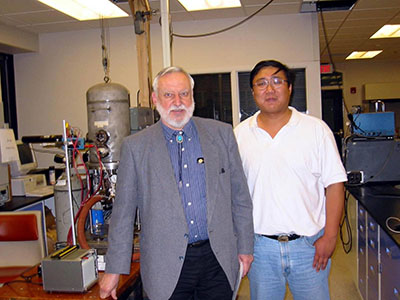Magnetic Bearing Torsional Creep Apparatus (MBTCA)
The magnetic bearing torsional creep apparatus, so called MBTCA is the world first magnetic bearing rheometer. It was originally built by D. J. Plazek in the 1960s. The MBTCA is ideal for performing both creep and recovery experiments. It can apply nearly zero stress (less than 0.10 N) to the sample because the load head is supported on a magnetic bearing, which permits extremely accurate measurements on small quantities of sample (less than 25 mg in mass).

The apparatus is also equipped with an environmental chamber, which allows experiments to be performed in inert atmospheres. The MBTCA was recently upgraded in our laboratory. A new PC-controlled automated data acquisition system replaces the old chart recorder, which makes the measurement of strain change much easier and faster than before.
Polymers and Condensed Matter Physics Group
-
Address
P.O. Box 43121, Lubbock, TX 79409−3121 -
Phone
806.742.3553 -
Email
che@ttu.edu
